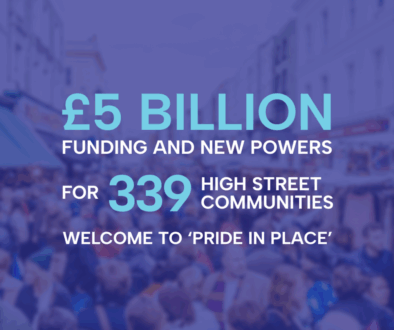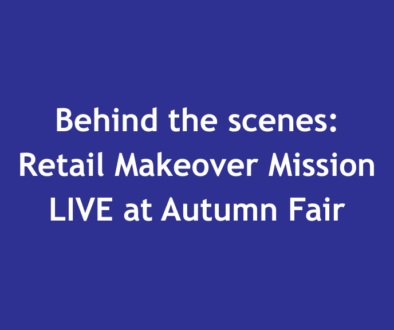Industry Insider – John Abbate
We recently spoke to John Abbate, retail design and visual merchandising expert. John is a member of our High Street Advisory Board and is a champion for independent businesses. We are proud to announce that John will be one of our judges for our Britain’s Best Shop Window #BestShopWindowUK Instagram competition. We had to learn more about his experiences and how independent business owners can impress potential customers with their shop window designs.
Can you tell us about the work you do at Northbanks Design?
After 25 years of experience in retail design and visual merchandising (Ralph Lauren, Levis, Alfred Dunhill) I joined Northbanks upon moving back to London from Shanghai where I had my own agency and worked with a similar agency to Northbanks, Design Overlay, for 5 years. We work with independent / emerging brands to help them get their foothold on the high street / department stores and are a new breed of retail design service provider, which interests me very much. Experienced, capable and flexible. We pull in talent when required to suit the clients needs and keep costs down. Retail is changing rapidly and requires a nimble agency to keep up the the changes. In particular we are interested in the ‘pop up’ trend, which we used to say was the future of retail and now it has arrived but few agencies are geared to service this retail segment. We work with both large and small brands and in particular, I like to work with emerging brands who need help in building their retail brand identity or for established brands that need to better communicate it through the manifestation of their physical presence.
What are the key components of an attractive shop window?
Window display is an art so the basic rules of proportion, composition, colour and focus apply at the basic level. Unlike a painting or photo though, they are 3 dimensional and seen from different angles, the mover is walking past so this must be considered. But windows are much more than this. They are a sales, marketing and brand building tool. It is the face of the brand as much as the marketing and digital identity are. The audience is the passing public, who just walking down the street and may not be shopping or noticing the brand but a window can grab their attention for a second or two. Perhaps amuse, engage or entice them to know more about the shop and brand. The best windows are the ones where people stop to look at it, the longer the better, if they crack a smile, great, if they walk in when they hadn’t planned to, then that’s a good window, if they buy something they saw in the window then it’s paying for the effort put into it.
What are the most common mistakes that business owners make with their shop window displays?
They don’t bother to make much of an effort.
- Plan their windows. There should be a window calendar set out in advance, ideally for the whole year. At least a months advance planning and some budget should given to design, build and set up the window. There are many reasons and strategies to do a window from: new collections or seasons, shopping holidays, work shops, events, lifestyle curation, product specific, seasonal trends, special promotions… they should be planned out in advance and have a flow.
- Every morning before the shop opens the window should be inspected viewed as if a stranger is looking at them. Ask themselves, ‘Would this window make me stop?, Would I want to buy something I saw in the window, does this window communicate what we are all about and what we want to sell? Do we look like we care enough about our customers to make the effort to entertain them with our windows, create street art for their pleasure as well as flog our goods? Is the window clean and the displays in good order?”
- Lighting: Spot lights should focus on the products and the window is like theatre. The background and displays all need to be considered. Getting up that ladder to adjust the lights is worth it.
- Change often, at least change the looks or product in the window every week. The entire window scheme should change minimum every 3 months. It’s about catching attention. If the window barely changes the public won’t bother looking and your store will be invisible to them. Major changes are therefore necessary to get their heads up and out of their phones. A window that is white that changes to dark will catch attention.
- Consider that a window is seen from multiple angles; from a passing car, people walking on the other side of the street, out the window from the building across the street, from close up, by people looking down….
- Make people smile. We are in London. I love it but half the year we would prefer to not be outside so let’s bring some cheer to the poor sods who have to be out there. Brighten their day, add a little interest to our high streets, show them that independent shops are important to our community and culture and to our sanity!
Where can we find out more about you?
When I first came back to London I started a textile company, Bluehanded but after a while I realised I also wanted to still be involved in retail design. My agency website domain expired and lost my on line portfolio but I can be found at Northbanks and LinkedIn where I have my portfolio to view.
I hope to be active at SaveTheHighStreet.org so I’ll be buzzing around there as much as I can!




